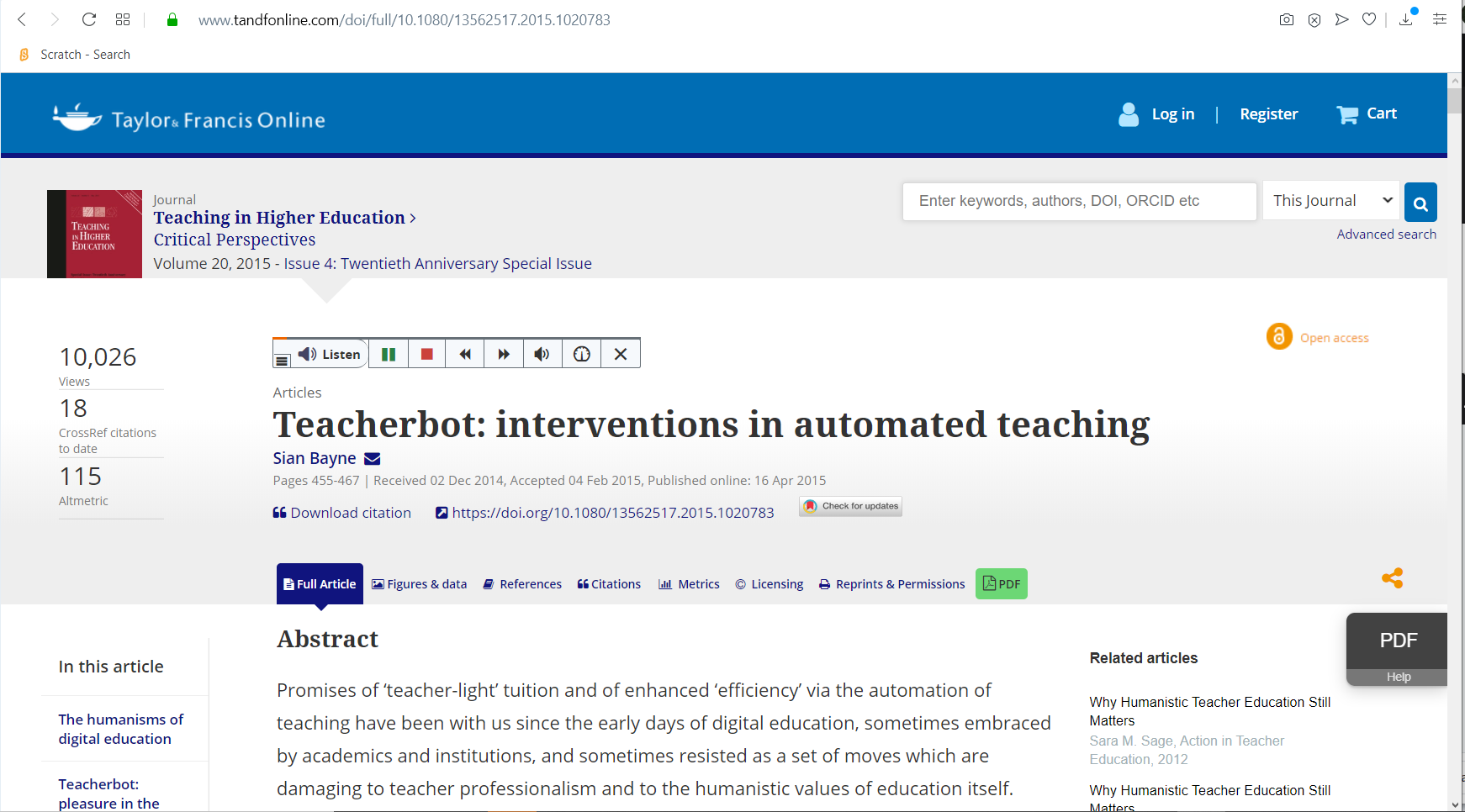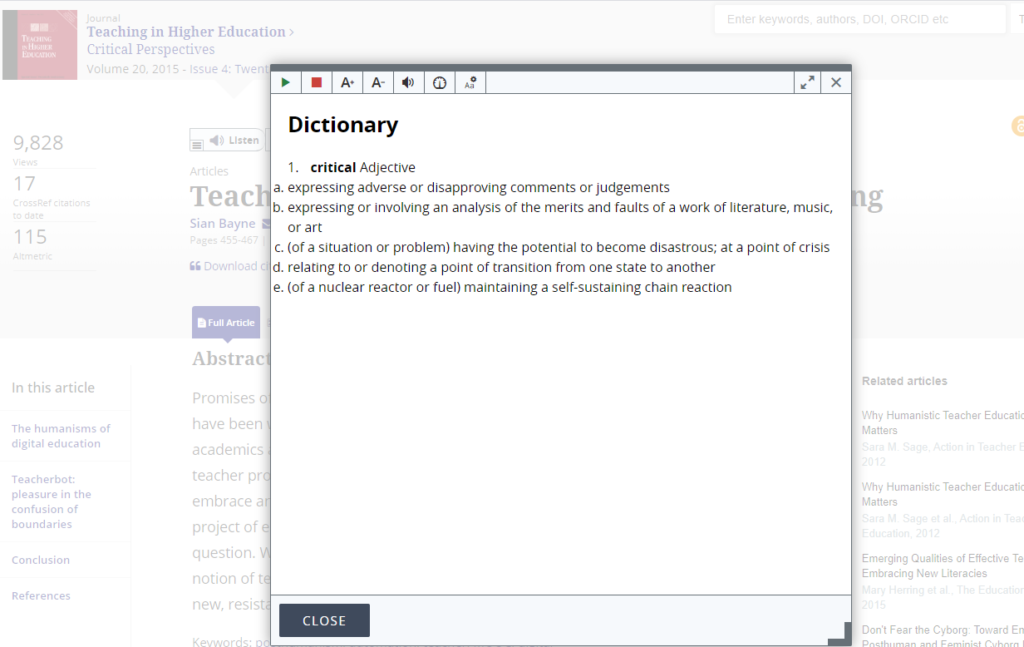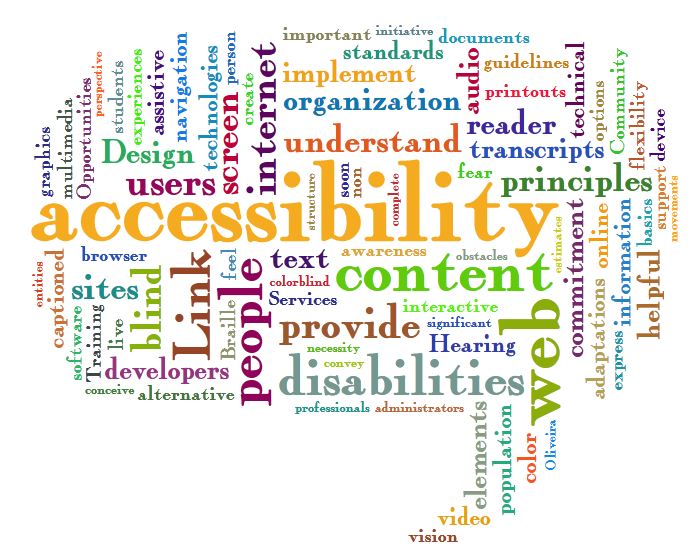Accessibility Experiment
When I looked up the article about Teacherbot, I decided to try out something else new, and take advantage of an accessibility feature of the online journal it was in: I noticed they had an audio option available and I thought that was great, so I had the article read out to me!

Audio version of Teacherbot: interventions in automated teaching. Journal: Teaching in Higher Education
Critical Perspectives
Volume 20, 2015 – Issue 4: Twentieth Anniversary Special Issue. https://www.tandfonline.com/doi/full/10.1080/13562517.2015.1020783
Audio version of Teacherbot: interventions in automated teaching.
Journal: Teaching in Higher Education: Critical Perspectives Volume 20, 2015 – Issue 4: Twentieth Anniversary Special Issue.
https://www.tandfonline.com/doi/full/10.1080/13562517.2015.1020783
It was an interesting experience in itself, and listening through the navigation options was a valuable reminder of the importance of making the navigation as accessible to those who can’t see where the options are as to those who can.
Fairly early on, I had to stop to look up a definition for Critical Posthumanism*, something that will now be tagged in as many of my blog posts as possible. I was impressed at first, when I selected the words and a dictionary popped up, but unfortunately it only offered a translation for ‘critical’. I assume most of the time that would work well though:

It half worked very well
Accessibility quibbles for non-standard users like me
It would be really handy if the audio reader toolbar could hover at the top of the page. Many times, I wanted to pause the audio and think over what it said, but had to scroll back up to the top of the page, and then lost my place. Presumably most people are using one modality or the other though, so this wouldn’t be an issue for them, and I solved it by opening two tabs. I did find it hard to go back to a certain point with the audio as well though.
There’s definitely a place for audio books, and I listen to them a lot myself anyway, but listening to online text being adapted for audio was another matter: while still possible, even done professionally it was a frustrating enough experience to remind me to take accessibility seriously.
*Critical posthumanism is a theoretical approach which maps and engages with the “ongoing deconstruction of humanism”.[1] It differentiates between the figure of the ‘posthuman’ (and its present, past and projected avatars, like cyborgs, monsters, zombies, ghosts, angels etc.) – Source: Critical Posthumanism Network
(Web Accessibility Word Cloud by Jill Wright, via Flickr. Licence: CC-BY-2.0 )



Leave a Reply